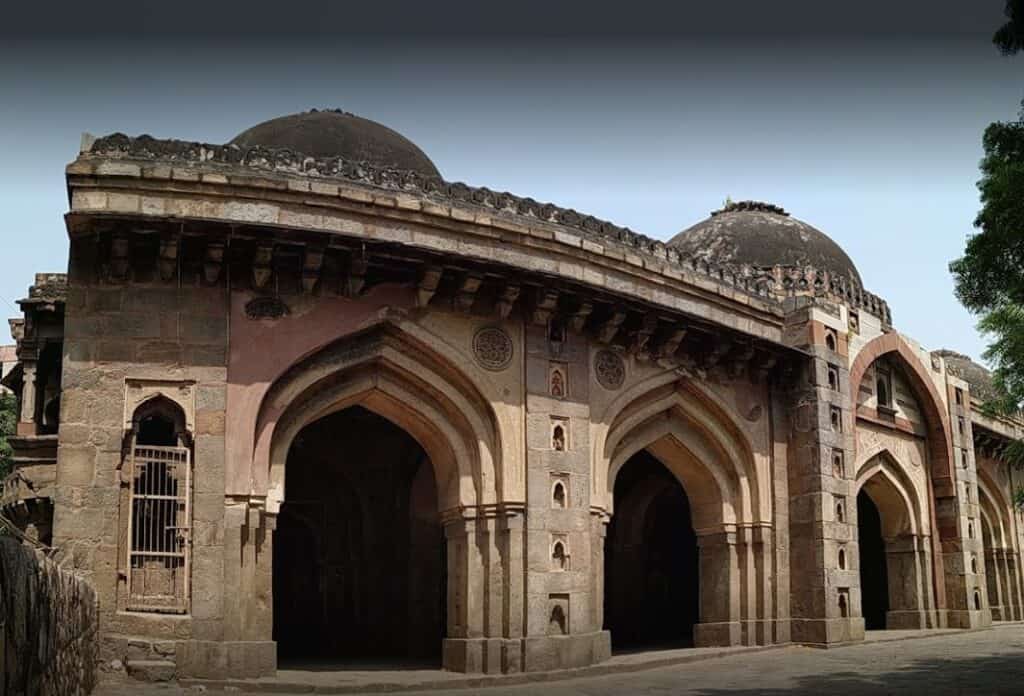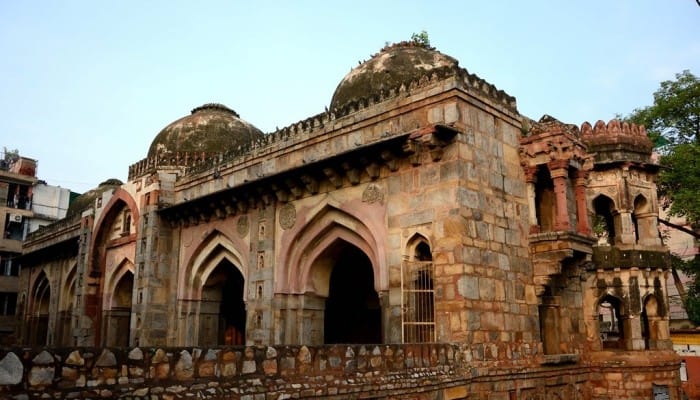Moth Ki Masjid is situated within the Masjid Moth Village. It is surrounded in front by the urban, residential, and commercial settlements of South Extension Part II in South Delhi and close to Uday Park.
Table of Contents – Moth Ki Masjid
What is Moth ki Masjid famous for?
This masjid is famous for its beautiful structure and unique history. But today, very few people know this mosque, with very few visitors.
History of Moth ki Masjid



Who built Moth ki Masjid?
Moth Ki Masjid was constructed within the fourth ancient medieval city of Delhi under the reign of the Delhi Sultanate. It was built in 1505 by Wazir Miya Bhoiya, a Prime Minister at the Royal Courts of Sultan Sikandar Lodi, aka Nizam Khan, the second ruler of the Afghan-Lodi dynasty.
Why is it called Moth ki Masjid?
Moth Ki Masjid, which means ‘Mosque of a Lentil seed,’ has many legends about how the name come about.
- One of them is that Sikandar Lodhi gave a minister named Miya Buhwa a lentil seed that he found while strolling. The Wazir considered this a gift from the Sultan and instead of throwing it away, he planted it. The resultant crop grew more lentils, which he sold and built Moth ki Masjid out of the money.
- Another lesser-known variation is that Mian Buhwa and Sikandar Lodhi were at a namaaz when the Sultan rose from his knees and Buhwa noticed a lentil seed on the mat. The minister took it and used the money he made from selling the crop and building the mosque.
- Some legends also say that initially, this was the minister’s private mosque, however today it is fully open to the public.
But however, it came about it is today known as ‘Moth Ki Masjid’ or the ‘Mosque of a Lentil seed.’
The architecture of Moth ki Masjid



- Unlike other traditional mosques, Moth ki masjid has no minarets, calligraphic decorations, or embellishments. It is made of red sandstone, a common theme during the Lodhi Dynasty.
- It is a beautiful mosque with a stunning ‘Gumbad’ or ‘Domed’ roof structural design commonly seen in most structures of that era.
- Raised on a high plinth, the mosque has a square layout. Its gateway is from the eastern side of Moti Masjid. The gate is made of red, blue, black, and white colored sandstones arranged charmingly.
- What is fascinating about the gateway is that it resembles Hindu temples with elephant trunk carvings and square pillars. Many scholars say that this is a fine example of Indo-Islamic architecture.
- From the outside, the mosque looks more like a place of fortification than a place of worship. The side area has exceptionally high walls and bastion-like turrets.
Location & Timings
It is easily approachable from Dhaula Kuan or Yusuf Sarai in South Delhi. The best landmark is the All India Institute of Medical Sciences Hospital (AIIMS) which comes right before South extension if you travel from Dhaula Kuan or Yusuf Sarai and hence is accessible by local transport.
Location: 92, Masjid Moth Rd, Masjid Moth Village, South Extension II, New Delhi, Delhi 110049, India
Nearest metro station: AIIMS on the yellow line.
Open: All days of the week
Visiting timings: From sunrise to sunset
Entrance fee: N/A
Nearby attractions: Salim Ghar Fort, Lotus Temple, Dilli Hatt INA, Humayun’s Tomb, Select City Walk.
- Guardians of the Game: The Critical Role and Unwavering Necessity of Fraud Verification Companies in Korea’s Toto Ecosystem - February 20, 2024
- Discover These Top Scenic Treks near Delhi - January 31, 2024
- Delhi Travel Tips - June 22, 2021

